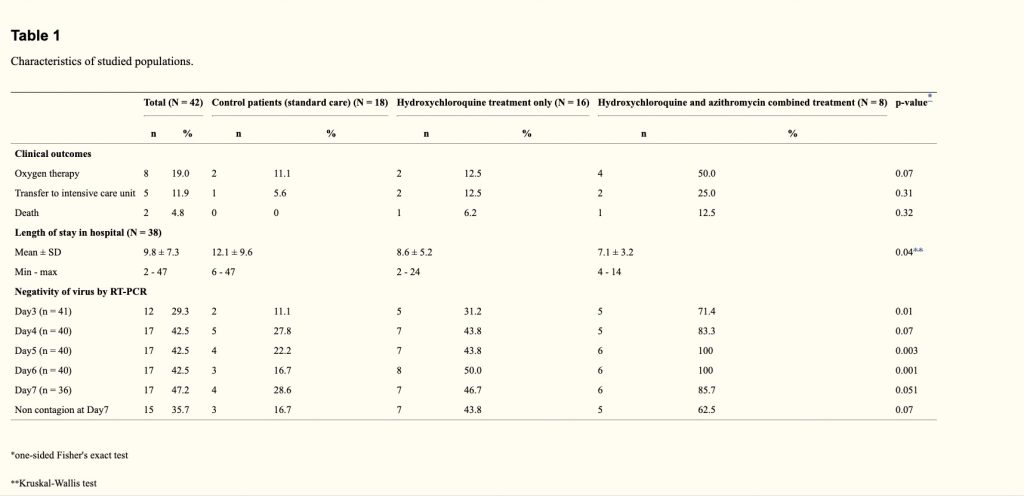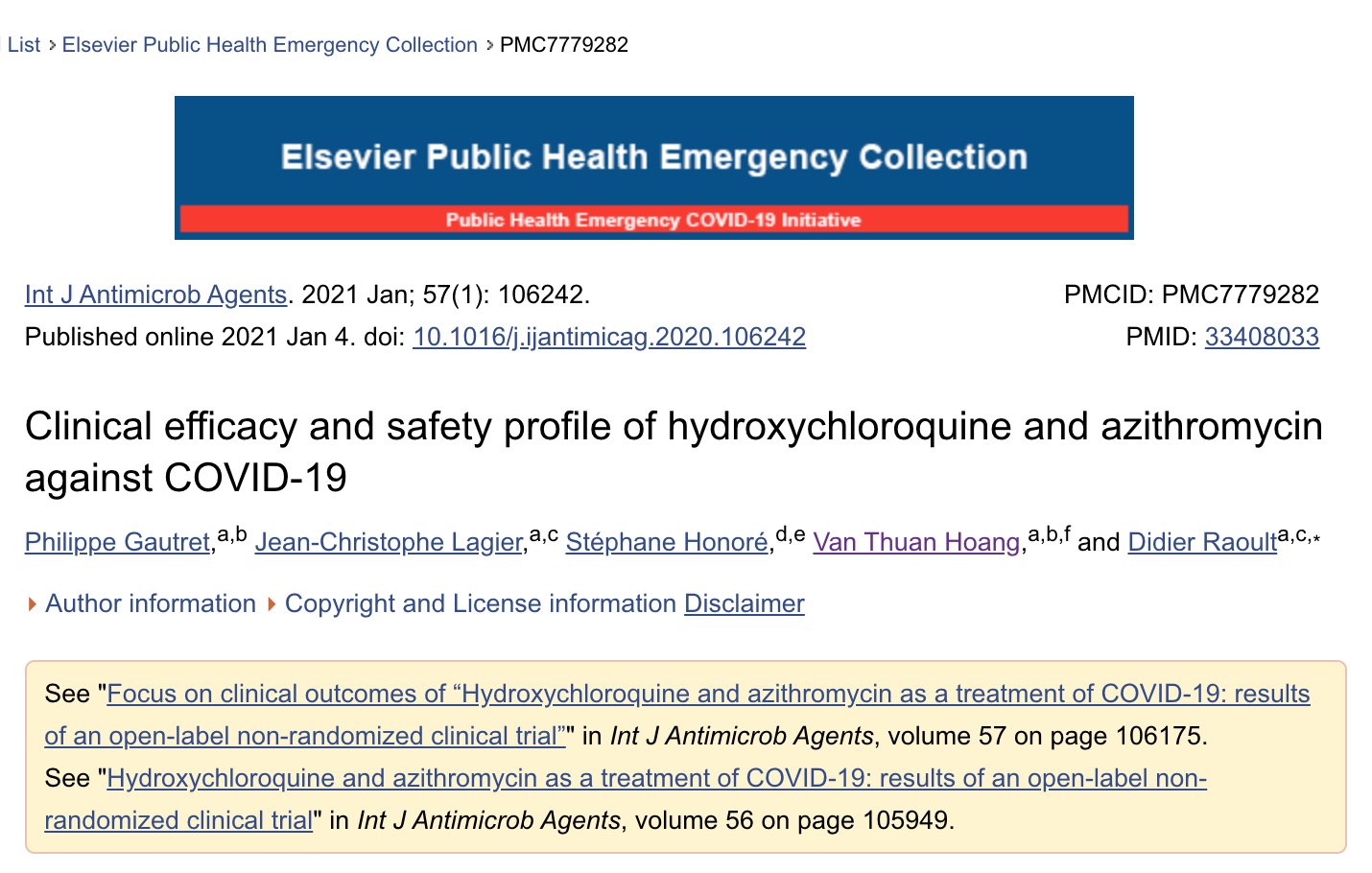Source: NCBI
Citation: Gautret, P., Lagier, J. C., Honoré, S., Hoang, V. T., & Raoult, D. (2021). Clinical efficacy and safety profile of hydroxychloroquine and azithromycin against COVID-19. International journal of antimicrobial agents, 57(1), 106242. https://doi.org/10.1016/j.ijantimicag.2020.106242
We agree with colleagues that clinical outcomes are also key elements to consider when assessing the effect of hydroxychloroquine-azythromycin (HCQ-AZ) combination [1]. To this end, we reanalyzed our data on all patients enrolled in our study (n=42) and, in addition to viral clearance over time, we analyzed clinical outcomes, including the need for oxygen therapy, transfer to intensive care unit (ICU), death and length of stay at hospital. Requirement for oxygen therapy, transfer to ICU and death did not significantly differ between groups. Length of stay at hospital and viral persistence were significantly shorter in the treated patients group, compared to the control group. Length of stay was calculated in 38 of 42 patients because two patients died, one was discharged against medical advice and information was missing for one patient (Table 1 ).
Table 1
Characteristics of studied populations.

We agree that the HCQ-AZ combination may potentially lead to drug-drug interactions. We paid a rigorous attention to avoiding this combination in patients with cardiac diseases, abnormal EKG, dyskalemia or the routine use of other interacting medications. The systematic pre-therapy workup included serum electrolyte analysis, and an electrocardiogram with corrected QT measurement (Bazett’s formula).
Close serum electrolyte analysis monitoring was performed in patients with low serum potassium levels at baseline. An electrocardiogram was routinely performed 48 hours after the start of treatment. Treatment with HCQ was discontinued when the corrected QT interval (QTc, Bazett’s formula) was>500ms, and the risk-benefit ratio of HCQ+AZ treatment was estimated by the infectious disease specialist and agreed with the cardiologist to be between 460 and 500ms.
No cases of torsade de pointe or sudden death were observed. Since this paper was published, we have treated a total of 3,119 patients with HCQ-AZ for at least three days. QTc prolongation (>60 ms) was observed in 25 patients (0.67%), resulting in discontinuation of treatment in 12 cases, including three cases with QTc> 500 ms.
No cases of torsade de pointe or sudden death were observed, including in the 9.5% patients over 65 years of age [2]. Finally, we totally agree with colleagues to pay attention to magnesium levels, with supplementation, if needed, to prevent life-threatening arrhythmias.
Related: COVID-19: A realistic approach to community management – HCQ & IVM in concert with vaccination
“I treated Covid not caring about the bans: zero deaths. But they told me to shut up ”▷ Dr. Szumski
Professor Ananda Prasad at 92 years of age – putting together the pivotal antiviral role of zinc

